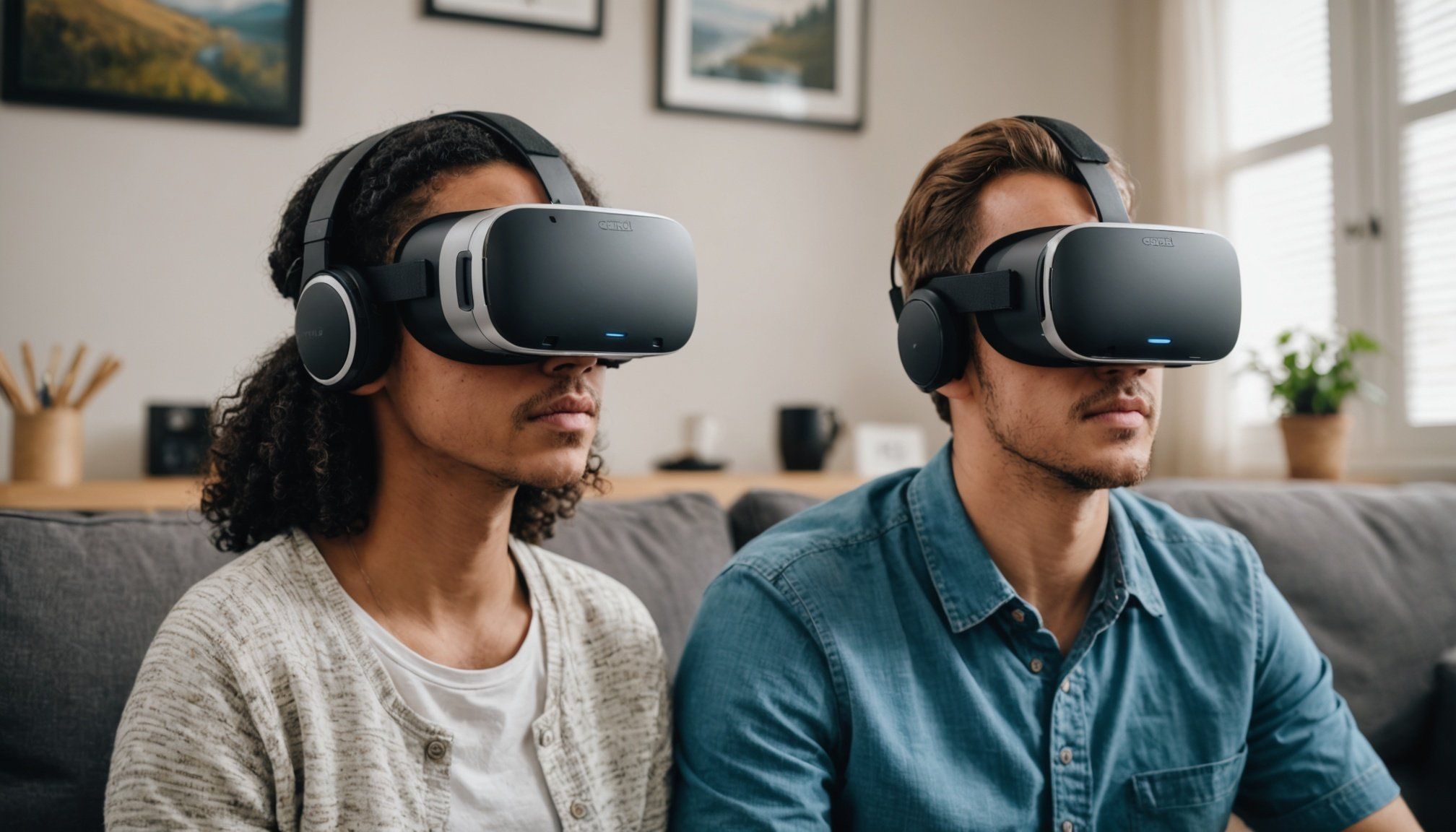Importance of Safety Guidelines in VR Therapy
Implementing robust safety guidelines in VR therapy is crucial for enhancing therapeutic outcomes. These guidelines ensure a controlled environment, significantly reducing the risk of adverse effects for patients seeking mental health support. By following comprehensive safety measures, therapists can minimize potential side effects such as dizziness, disorientation, or anxiety, which may arise from VR exposure.
Inadequate safety measures in virtual environments can pose significant risks, compromising not only the therapy’s effectiveness but also the well-being of patients. If ignored, it can lead to negative experiences, deterring individuals from pursuing beneficial mental health treatments in VR settings. Therefore, it is essential for mental health professionals to commit to stringent safety protocols.
This might interest you : Unlocking stealth: advanced dynamic lighting strategies for immersive video game experience
Adhering to ethical standards in mental health treatment within VR therapy underscores the responsibility practitioners hold. These standards ensure treatments are conducted with the utmost care and respect for patient confidentiality and comfort. Ultimately, observing these guidelines fosters trust and promotes a supportive therapeutic atmosphere, improving overall patient outcomes and advancing the credibility of VR therapy as a legitimate and effective method in mental health care.
Comprehensive Safety Measures for VR Implementation
Incorporating VR implementation into environments requires adherence to best practices and safety measures to ensure user protection. Establishing a secure VR environment begins with crafting guidelines that assess both physical and digital parameters. Ensuring adequate space for movement and using devices that prevent physical harm, such as padded gear, are essential steps.
Have you seen this : Empowering accessibility: key strategies for designing inclusive game interfaces for players with disabilities
Technical considerations form a critical component in VR game development, especially when focusing on mental health applications. Developers should prioritize features that accommodate user sensitivity, reducing risks of disorientation and cybersickness. This can be achieved by refining graphics to minimize motion blur and ensuring a smooth frame rate.
Equally significant are the protocols for user testing and feedback. Engaging diverse user groups in testing phases helps glean insights into varied responses, contributing to a safer end product. Establishing regular feedback channels allows developers to continuously refine their offerings. Ensuring users have access to clear instructions and support services further enhances user confidence in VR experiences.
Promoting a culture of safety not only reduces risks but also builds trust among users. By integrating these practices, VR developers can advance technology while safeguarding the well-being of their audience.
Identifying Psychological Risks in VR Therapy Games
Virtual Reality (VR) therapy games hold immense potential for treatments but bring unique challenges, particularly around psychological risks. Proper assessment is paramount.
Common Psychological Reactions
Users engaging with VR therapy games might encounter several psychological reactions. These can range from mild discomfort like dizziness or disorientation to more serious issues such as anxiety or hostility. The immersive nature of VR can make emotions feel more intense. Consequently, psychological risks should be carefully evaluated to ensure the wellbeing of users.
User Screening Protocols
Before users embark on VR therapy, robust screening protocols are essential. This assessment process aims to identify those at risk of adverse reactions. It involves gathering detailed histories, assessing past experiences with VR, and understanding current psychological states. Such comprehensive screenings help ascertain how users might respond to VR environments, identifying potential risks early.
Mitigation Strategies
To counter adverse effects, multiple mitigation strategies can be employed during therapy. These include:
- Implementing guided sessions with trained therapists.
- Gradually increasing VR exposure to acclimate users.
- Providing breaks to alleviate discomfort and manage emotions.
Such strategies aim to create a balance, enhancing therapeutic benefits while minimizing negative psychological impacts in VR therapy games.
Ethical Considerations in Using VR for Mental Health
Exploring ethical considerations in using virtual reality (VR) for mental health treatment is crucial, prioritising informed consent. In VR therapy, informed consent not only involves the usual permissions but also a clear understanding of VR’s unique implications. Patients must know how the immersive experience might affect them and what data is being collected.
Furthermore, balancing technology with personal interaction is vital in this evolving field. While VR offers innovative tools for therapy, it should not replace human touch. Therapists must ensure technology complements, rather than supplants, traditional therapeutic methods, maintaining empathy and understanding.
Confidentiality and data security stand as additional VR ethics issues. The nature of VR therapy involves collecting sensitive data, including behavioural responses and biometric data. Addressing these concerns is paramount to maintaining patient trust. Incorporating robust data protection frameworks helps safeguard patient information from misuse or leakage.
Confronting these ethical considerations ensures that VR remains a beneficial addition to mental health treatment, respecting patient rights and maintaining the integrity of therapeutic practices. The goal is to enhance mental health care while upholding the highest standards of ethical responsibility, fostering both trust and innovation in the field.
Case Studies Highlighting VR Safety Applications
Virtual reality (VR) safety applications have been at the forefront of innovative advancements in mental health. Let’s delve into specific case studies that underscore the practical use of VR safety in mental health applications.
Successful Implementations
One of the most acclaimed case studies is the use of VR in exposure therapy for anxiety disorders. This involves immersing patients in a controlled VR environment where they can safely face anxiety-inducing stimuli. By utilizing robust safety protocols, therapists can gradually modulate the intensity, ensuring a supportive therapeutic process. This application leverages VR’s immersive nature while maintaining patient safety as a top priority, resulting in significant clinical improvements.
Lessons Learned from Failures
However, not all implementations are without flaws. Some case studies highlight executions where safety oversights led to adverse effects. For instance, inadequate calibration of VR equipment can lead to disorientation or nausea, deterring patients from continuing therapy. Such failures underscore the necessity of meticulous safety checks and continuous improvement of VR technologies for mental health applications.
Comparative Analysis of Case Studies
A comparative analysis of different case studies reveals varying safety strategies. While some focus on equipment reliability, others emphasize developing user-centric protocols to enhance patient comfort. By examining these diverse approaches, stakeholders can refine their methods, striving for optimal VR safety applications across mental health contexts.
Recommendations from Experts on VR Therapy Safety
Expert recommendations emphasize the importance of adhering to best practices for using VR in therapy. Mental health professionals highlight that VR therapy offers immersive experiences that must be administered with caution. To ensure VR safety, it is advised that therapists undergo ongoing training. This ensures they are well-equipped to address any issues that may arise during sessions.
Mental health professionals suggest that continuous education helps therapists stay updated on VR advancements and potential risks. This knowledge enables them to offer the safest therapeutic environment possible. Experts also stress the importance of collaborating with developers. By working together, they can enhance the safety features of VR therapy applications, addressing concerns such as motion sickness and digital eye strain.
Recommendations from psychologists involve interacting with the developers during the design phase. This collaboration can result in creating therapeutic games that are safe and effective, ultimately benefiting patients. Key approaches include adopting adaptive content that responds to the user’s emotional state and implementing clear guidelines for session lengths.
In essence, expert recommendations aim to bridge the gap between technology and therapy, ensuring that VR applications serve patients safely and effectively while offering insightful experiences.
Practical Tips for Integrating VR in Therapy
Integrating VR into therapy sessions offers a unique set of challenges and advantages. Below, we discuss practical tips to seamlessly incorporate this technology into therapeutic practices.
Session Preparation
Preparation is vital for successful integrating VR into therapy sessions. Begin by selecting the appropriate VR software tailored to the client’s needs, ensuring it aligns with therapeutic goals. Equally important is checking the equipment for compatibility and functionality, to avoid technical interruptions. Establish a distraction-free environment, which enhances focus and immersion during the session. Prior to starting, brief the client on what to expect, addressing any apprehensions they may have.
User Experience Enhancements
Enhancing user experience is crucial for effective therapy. Invest in comfortable, adjustable VR headsets to accommodate all users. Customise the VR content to meet individual preferences and ensure it is engaging yet therapeutic. To foster comfort, allow breaks during sessions, preventing fatigue and promoting sustained interest. Encourage clients to provide feedback about their experiences, which can inform future adjustments.
Ongoing Evaluation
Continuous assessment of the therapy sessions is essential. Develop a feedback loop where observations are regularly documented, allowing for systematic evaluation of progress. Adjust therapeutic techniques based on client feedback, technological advancements, or observed needs. This proactive approach ensures that VR-based therapy remains dynamic and client-focused, maximising its therapeutic impact.










